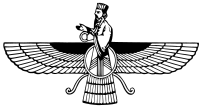Avestan geography

Avestan geography is about the places that people in ancient times believed in. Back then, people used stories to understand the world around them instead of just looking at maps like we do now.
The Avesta is a collection of religious texts from ancient Iran, and within it, there are descriptions of different lands and territories. Some of these places are real, like the Indus River, where many people lived, and some are fictional, like a place called Varena.
The stories in the Avesta describe how people believed the different regions were connected and how they affected each other. For example, there is a tale about how the god of the sky, Ahura Mazda, created a bridge that connected the east and the west. Another story tells us about how the god of water, Apam Napat, helped make the lands fertile by giving them rivers to water the crops.
Overall, Avestan geography is a way of understanding how different parts of the world relate to each other, and how they are important to the people who live there. It's a way of understanding the world through the stories and beliefs of people who lived long ago.
The Avesta is a collection of religious texts from ancient Iran, and within it, there are descriptions of different lands and territories. Some of these places are real, like the Indus River, where many people lived, and some are fictional, like a place called Varena.
The stories in the Avesta describe how people believed the different regions were connected and how they affected each other. For example, there is a tale about how the god of the sky, Ahura Mazda, created a bridge that connected the east and the west. Another story tells us about how the god of water, Apam Napat, helped make the lands fertile by giving them rivers to water the crops.
Overall, Avestan geography is a way of understanding how different parts of the world relate to each other, and how they are important to the people who live there. It's a way of understanding the world through the stories and beliefs of people who lived long ago.
Related topics others have asked about:
